What is the quality of Yunnan small grain coffee? I was surprised to have a drink of Yunnan iron pickup today.
I am a coffee lover.
Didn't they say that Yunnan beans are very ordinary, but I was pleasantly surprised to drink iron pickup truck today
The owner is also a coffee lover, in order to pass the time to open their own coffee shop. Today, I went to gather popularity specially. The proprietress took out half a pound of high-altitude iron pickup truck carefully prepared by the owner of the coffee garden in Dehong, Yunnan, and let me try it.
Small Fuji 4.5 scale, water powder ratio 1:15, Harrio V60 filter cup, cheat pot
Taste: Sweet, light bitter, mellow balanced feeling, rich layers, aftertaste dark chocolate, honey, sugar taste obvious, there is a sticky feeling, completely cooled, thick oolong tea aroma, touch with your fingers, unexpectedly have burnt syrup sticky feeling.

Coffea yunnanensis
Yunnan arabica coffee, rubiaceae, coffee, planting area is mainly distributed in Lincang, Baoshan, Simao, Xishuangbanna, Dehong and other prefectures. Arabica coffee is native to Ethiopia or the Arabian Peninsula.
main producing areas
Arabica coffee is suitable for growing in the mountains of 800~1800 meters above sea level. If the altitude is too high, it tastes sour, and if it is too low, it tastes bitter. Arabica coffee is mostly planted in dry and hot valleys at an altitude of about 1100 meters, so the acidity is moderate, the aroma is rich and mellow. Many areas of Yunnan Province have unique environments suitable for the growth of Arabica coffee, and the Arabica coffee produced is of excellent quality.
Planting areas are mainly distributed in Lincang, Baoshan, Simao, Xishuangbanna, Dehong and other prefectures. Baoshan has an average temperature of 21.5℃ and a maximum temperature of 40.4℃. There is basically no frost all year round. It is recognized as the best producing area of Arabica coffee. The Arabica coffee cultivated here is famous for its strong but not bitter, fragrant but not strong, well-proportioned grain facets, mellow fragrance and fruity flavor. The International Coffee Organization's tasting experts rated Yunnan coffee as Colombia wet-processed Arabica coffee, the highest quality coffee in the world.
varieties
Typica: The oldest indigenous variety of Ethiopia, native to Ethiopia and southeastern Sudan, from which all Arabica is derived. Elegant flavor, but weak constitution, poor disease resistance, fruit yield less. Jamaica Blue Mountain, Sumatra Mantning, Hawaii Kona and other excellent estate beans belong to Tibika. The top leaf of tibeka is red copper color, called red top coffee, tibeka belongs to arabica.
Catimor: In 1959, the Portugal interbred Brazilian cadura with Timor to breed a disease-resistant catimor/catimo, which is currently an important commercial bean variety.
growth period
Coffea arabica 3~4 years old fruiting trees.
Coffee is a short-day plant. Coffee has the characteristics of multiple flowering and concentrated flowering. Coffea arabica flowers from February to July and blooms from March to May in Yunnan. The flowering of coffee is greatly affected by climate, especially rainfall and temperature. Coffee flower life is short, only 2 - 3 days. Arabica coffee generally opens at 3 to 5 in the morning and blooms at 5 to 7.
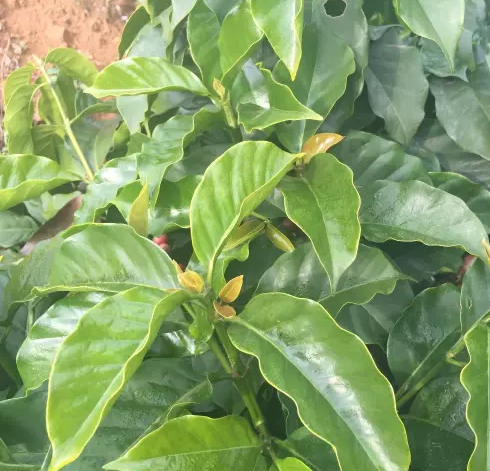
Coffee fruits take longer to develop. Coffee arabica ripens in 8~10 months, usually in October ~ December of the year. Rainfall has a great influence on fruit development, climate conditions directly affect fruit development,
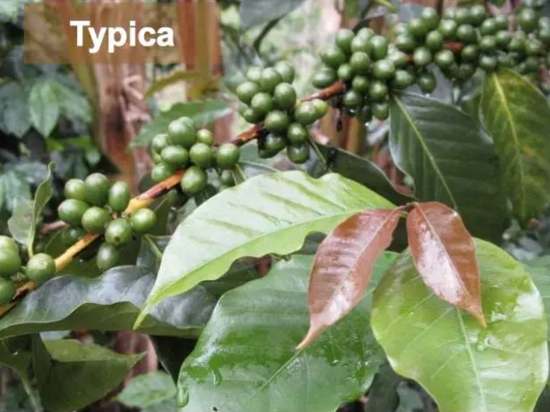
The new leaves at the tips of the branches and leaves above are copper-colored. This is the coffee tree of the tibeka species. The tibeka is an older strain of the arabica family, known as the hawaiian kona and Jamaica blue mountains, which are also tibeka species. It was easy to recognize them among the katim. When you look closely, you will see that each species has its own appearance. The leaves of Katim are all hanging down, and the tree looks like it is wearing a cloak. Tibika, on the other hand, has branches upward and new leaves with copper tops growing at the top of the tree.
Along the way, most of Yunnan is now planted with Katim, this variety is a hybrid of Kadura and Robusta, the bourbon branch of Arabica species. The reason for planting this variety is that Katim has Robusta gene, so it is more resistant to disease than single old varieties conveniently, and the yield is also good. Compared with delicate old varieties, the disease resistance is poor and the yield is low. Farmers naturally prefer to plant Katim, so now Yunnan has set off a wave of Katim wind.
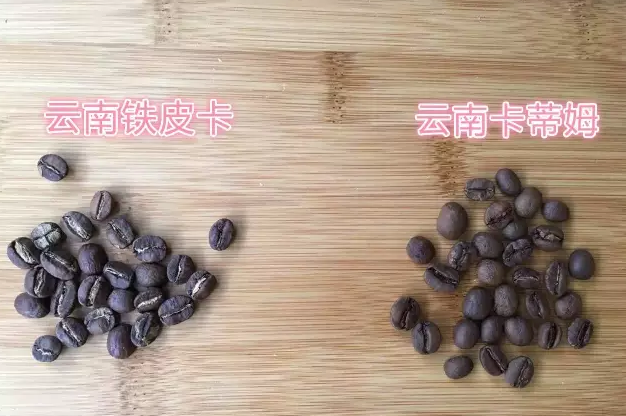
(Tibica beans)
Katim beans are round and thick, tibika is thin and long, and the central line of katim is messy. Under the same conditions, tibika is better than katim in quality and higher in price.
Typica
Typica is one of the oldest native varieties in Ethiopia. The top leaves of Tiebika are bronze, the beans are oval or thin and pointed; the flavor is elegant, but the physique is weak, the disease resistance is poor, and the fruit yield is small.
Typica is one of the oldest varieties of Arabica coffee found today, the other being bourbon. The Arabica species originated in Ethiopia, where it still grows naturally today in the pristine rainforest upland. The species was brought to Yemen in the 13th and 14th centuries, and around 1700 it was bred at Hortus Botanicus in Amsterdam. The tiepika saplings were the first saplings from the royal gardens of the netherlands to be brought into central and south america and planted in the new world. Iron pickup is a pure bloodline of precious trees, fruit oval, leaves brass, fruity flavor was varied.
(Tibica beans)
Katim beans are round and thick, tibika is thin and long, and the central line of katim is messy. Under the same conditions, tibika is better than katim in quality and higher in price.
Typica cultivars
Java
Java has long fruits and bronzed leaves and is believed to be a descendant of coffee introduced to Java from Yemen. This variety was first introduced from Java to neighbouring islands (Time) and then to East Africa (Cameroon), where cultivation began in 1980. Introduced to Central America by CIRAD (International Centre for Agricultural Research and Development). In Cameroon, this variety is known for its moderate yield and resistance to coffee berry disease.
Maragogype
A mutant of Typica was first discovered in Brazil in 1870. The fruit is large, long and somewhat twisted, and the plant has long internodes and large leaves. Production is relatively low.
Kent
It is believed to be a tall Typica species found in Kent/Kent, India. This variety has been widely cultivated in India since 1930. One of these varieties, called K7, is more common in Kenya and is the most rust-resistant variety of coffee beans.
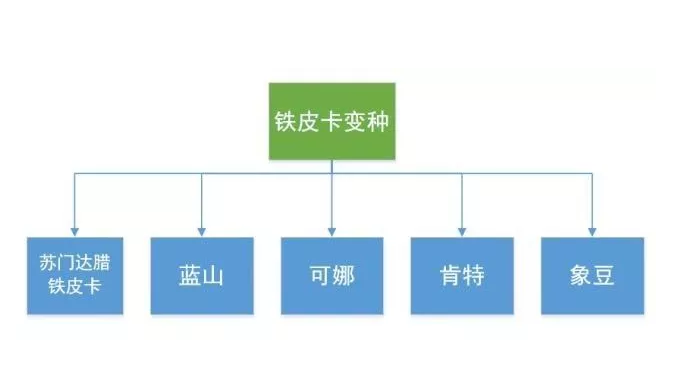
Yunnan Huaguoshan (Typica):
Degree of roasting: medium roasting
Dried aroma: pear fruit, vanilla, honey, peach tea, ripe orange, jasmine hints
Wet aroma: nutty, milky chocolate, herbal
Palate: Soft on the palate, Asian herb aroma, lively and bright acidity, cheeks salivation, sour softness, mellow balance, rich layers, aftertaste dark chocolate, honey, sucrose flavor obvious, completely cooled, brown sugar flavor.
Recommended cooking methods: siphon, hand brewing
Abrasion: 4 (Fuji R440)
Water temperature: 90°C
Other suggestions for trickle-filtration extraction:
Normal pressure, recommended abrasiveness of 3.5-4/water temperature 90°C
Aile pressure, recommended 2.5 grind, water temperature 88°C
Hand washing: 3.5 grinding degree, water temperature 89°C
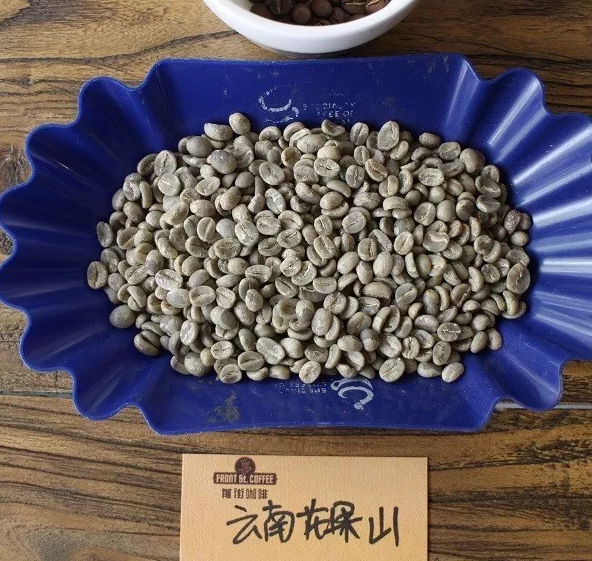
Taobao Link: item.taobao.com/item.htm? spm=a1z10.5-c.w4002-15673140460.35.74c367d3Ht2rZS&id=535615170690
Important Notice :
前街咖啡 FrontStreet Coffee has moved to new addredd:
FrontStreet Coffee Address: 315,Donghua East Road,GuangZhou
Tel:020 38364473
- Prev

The difference between iron pickup and black coffee, the difference between small grains in Yunnan, and the characteristic flavor of iron pickup coffee.
Yunnan small-grain coffee Yunnan small-grain coffee, Rubiaceae, coffee genus, the planting area is mainly distributed in Lincang, Baoshan, Simao, Xishuangbanna, Dehong and other states. Small grains of coffee are native to Ethiopia or Arabian Peninsula. The main producing area of small-grain coffee is suitable to grow in the mountains of 800-1800 meters above sea level. If the altitude is too high, it will taste sour, and if it is too low, it will taste bitter. Most small grains of coffee are planted at 1100 above sea level.
- Next

The origin of Yunnan small-grain coffee, the oldest native variety in Ethiopia.
Professional barista communication Please follow the coffee workshop (Wechat official account cafe_style). I am a coffee lover. I always say that beans in Yunnan are very ordinary, but today I was surprised that the boss's wife is also a coffee lover. In order to pass the time, she opened her own coffee shop. Today, I went out of my way to gather popularity. The landlady took out half a pound and claimed to be from Yunnan Dehong.
Related
- Detailed explanation of Jadeite planting Land in Panamanian Jadeite Manor introduction to the grading system of Jadeite competitive bidding, Red bid, Green bid and Rose Summer
- Story of Coffee planting in Brenka region of Costa Rica Stonehenge Manor anaerobic heavy honey treatment of flavor mouth
- What's on the barrel of Blue Mountain Coffee beans?
- Can American coffee also pull flowers? How to use hot American style to pull out a good-looking pattern?
- Can you make a cold extract with coffee beans? What is the right proportion for cold-extracted coffee formula?
- Indonesian PWN Gold Mandrine Coffee Origin Features Flavor How to Chong? Mandolin coffee is American.
- A brief introduction to the flavor characteristics of Brazilian yellow bourbon coffee beans
- What is the effect of different water quality on the flavor of cold-extracted coffee? What kind of water is best for brewing coffee?
- Why do you think of Rose Summer whenever you mention Panamanian coffee?
- Introduction to the characteristics of authentic blue mountain coffee bean producing areas? What is the CIB Coffee Authority in Jamaica?

